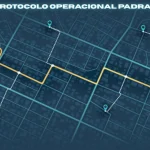Family problems can be very stressful and can sometimes last a long time. When families deal with legal issues like divorce or child custody, the court process can feel confusing and hard to handle.
Mediation is a helpful way to solve these problems. It offers a calmer and faster option instead of going to court.
Knowing how mediation works and why it helps can make it easier for families to get through tough times and work together better. So let’s dive in!
1. Facilitator of Communication
Emotions often run high in conflicts related to divorce or custody. This makes constructive dialogue challenging. A skilled mediator creates a safe and neutral environment where both parties can express the following:
- feelings
- and needs
This approach encourages understanding and empathy. It often leads to the resolution of misunderstandings that might escalate into bigger issues if left unaddressed.
Effective communication during mediation can improve satisfaction levels in family legal disputes. Also, families who participate in mediation report a greater sense of control over the process and outcomes compared to those who opt for litigation.
2. Empowering Parties to Make Informed Decisions
Mediation empowers parties involved in family legal disputes by placing decision-making into their hands. Unlike in traditional litigation, where a judge imposes a resolution, mediation allows individuals to collaboratively create solutions that best suit their unique circumstances. Each party has the opportunity to outline their desires, concerns, and hopes regarding the following:
- custody arrangements
- or divorce settlements
This empowerment often leads to more sustainable agreements. When families have a say in the outcome, they are more likely to adhere to the terms since they actively participated in crafting them.
Additionally, mediation encourages critical thinking and negotiation skills. This equips families to address future disputes amicably.
3. Reducing the Financial and Emotional Costs
Litigation can result in exorbitant legal fees, with divorce lawyers charging high hourly rates, along with court costs and other associated expenses. In contrast, mediation is generally more affordable. It allows families to allocate their resources more effectively.
- Save on legal fees
- Minimize court costs
- Reduce the time involved in reaching resolutions
Moreover, mediation can significantly lower stress levels. The cooperative nature of mediation promotes a healthier atmosphere.
If you find yourself facing a family legal issue, reaching out to qualified divorce lawyers experienced in mediation can be a proactive step towards a more harmonious resolution.
4. Creating Lasting Solutions
The ultimate goal of mediation is to create lasting solutions that work for all parties involved. Unlike court judgments, which may feel arbitrary or lengthy, mediation focuses on crafting agreements that consider the interests and needs of everyone involved.
Skilled mediators guide families through the process. This ensures that concerns are addressed and that everyone feels heard. This results-oriented approach can lead to creative solutions that a judge may not consider.
For instance, families can agree on flexible parenting schedules that work with their individual lifestyles. This can lead to a more harmonious post-dispute relationship.
Evidence shows that well-crafted agreements contribute to higher compliance rates. This ensures that families are less likely to return to court for modifications.
The Effectiveness of Mediation Versus Litigation in Family Legal Dispute
Mediation plays a crucial role in resolving family disputes by promoting communication and prioritizing the well-being of all parties involved. Its effectiveness has been proven time and again in helping families find mutually beneficial and sustainable solutions.
Consider mediation as a constructive and healing way to find resolution. Take the first step towards a peaceful family dynamic by seeking the assistance of a qualified mediator today.
Like this article? Read more about these topics on our blog.







